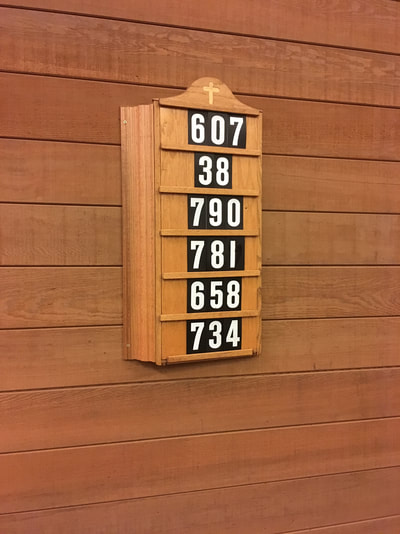|
CONSTITUTION
ON THE SACRED LITURGY SACROSANCTUM CONCILIUM SOLEMNLY PROMULGATED BY HIS HOLINESS POPE PAUL VI ON DECEMBER 4, 1963 49. For this reason the sacred Council, having in mind those Masses which are celebrated with the assistance of the faithful, especially on Sundays and feasts of obligation, has made the following decrees in order that the sacrifice of the Mass, even in the ritual forms of its celebration, may become pastorally efficacious to the fullest degree. 50. The rite of the Mass is to be revised in such a way that the intrinsic nature and purpose of its several parts, as also the connection between them, may be more clearly manifested, and that devout and active participation by the faithful may be more easily achieved. For this purpose, the rites are to be simplified, due care being taken to preserve their substance; elements which, with the passage of time, came to be duplicated, or were added with but little advantage, are now to be discarded; other elements which have suffered injury through accidents of history are now to be restored to the vigor which they had in the days of the holy Fathers, as may seem useful or necessary. I am in the middle of cleaning and overhauling my home office. A veterans’ organization became recipient of my American history library, so there is now more space for theology. But this does not touch the amount of paper files and photo albums I have accumulated in some cases over 50 years. I found my 1965 SAT scores (577 verbal, 563 math) which may explain why no college came knocking at my door. Catholic University had to take me; I think it was in their charter that they couldn’t refuse seminarians. I also came across a booklet I had published in 1988, for the opening of the church I had built that year. The book was part informational and, truth be told, part legal defense; we documented every part of the structure with Roman directives, because this was a Vatican II Church. As luck would have it, my wife is out of town this weekend, so I went to Mass tonight right here in my own town, where I pastored for a decade and built the church. [We belong to the parish where Margaret was principal, about12 miles away.] I am not known or remembered there today except for a few of the old guard. Since I left in 1989 there have been several pastors, each with his own reaction to the 1988 Vatican II structure. One of my successors built a rather large chapel connected to the church by a covered walkway. Truth be told, the chapel would adequately house many a smaller parish. More disturbing to me personally was the removal of the carefully designed and appointed Eucharist Chapel and the daily Mass chapel. The stained glass behind the tabernacle was created to illustrate the fire of God descending in the Holy of Hollies. I have never gotten a precise answer on why that artwork and the complex was tactlessly disposed of. There are two general theories: (1) the space was needed for more seating; and (2) a previous bishop hated saying Mass where he couldn’t see the tabernacle. My guess is that reason two was the driver and reason one the public rationale. I would say that this is my biggest disappointment with the structure today. There are some other changes that brought a smile. The church was designed with a semi-circular arena effect so that the congregation would have excellent viewing lines. Well, a few years ago someone got the bright idea to install kneelers. What I noticed tonight is that the installer never allowed for the pitch of the floor; the effect is kneeling on the downslope of a hill. When I tried the kneeler, I almost fell into the seat in front of me. I also chuckled at another innovation since my day, the hymn board. A few weeks ago, on this stream I treated of the “four hymn sandwich” mode that afflicts American Catholic music. Well, in this church the chef really goes to town. (See below.) However, the music program itself—despite a few of the hymns—is sincere and unpretentious. The parish has just been assigned two priests from overseas—I’m not sure where. The associate was celebrant, and his English is competent enough for celebrating the Eucharist. The homily was brief and basic. I can understand that. Preaching is hard enough; doing it in a foreign language is a crusher. What I do find in my travels, though, is the amount of respect that good Catholics have for the courage of priests who voluntarily plunge into our culture so that we can maintain the Sunday Eucharist. Sitting in the main body of the church, I reflected upon every step of the journey to erect this worship space. overall, the atmosphere we tried to create for worship is intact. I remember joking during construction that if a pastor makes any mistakes in construction, they will be enshrined in concrete for a century. I think this building will make it for a century. In the context of our Saturday stream, Sacrosanctum Concilium set the directives for how the Vatican II reforms were to be implemented in rites and architecture. The ambivalence of Catholics about the reforms has been mentioned here before, but having built a church and watching the varying degrees of reception or distaste has given me a front-row seat for what Church journalism calls the liturgy wars.
0 Comments
Leave a Reply. |
LITURGY
March 2024
|

 RSS Feed
RSS Feed